Huanqia Huanqu Tu: An Illustrated Album of Harmonious Joy in the Lantern Festival
Overview
This 12-panel Qing Dynasty album, Huanqia Huanqu Tu (欢洽寰区图册), housed in the National Palace Museum, Taipei, captures the exuberant festivities of China’s Lantern Festival (元宵节, Yuánxiāo Jié) through scenes of children playing with lanterns and engaging in traditional games. Though unsigned, scholars attribute it to court painters of the Qing imperial workshops, likely created during the Jiaqing reign (1796–1820) due to stylistic similarities with the album Shengping Leshi (升平乐事, “Celebrations of Peace and Prosperity”). The title translates to “Harmonious Joy Across the Realm,” blending folk customs with imperial symbolism to project an image of prosperity under Qing rule.
Translations and Cultural Context
Each panel is meticulously painted in ink and color, depicting playful scenes with symbolic undertones. Below are the translated titles, descriptions, and cultural explanations:
- Taiping You Xiang (太平有象, “Peace and Prosperity with Elephants”)
- Depiction: Children hold elephant-shaped lanterns.
- Symbolism: Elephants symbolize stability and auspiciousness in Chinese culture, reflecting imperial aspirations for a peaceful reign.
- Zhu Ma Xing (竹马行, “Bamboo Horse Procession”)
- Depiction: Children ride bamboo stick horses.
- Cultural Note: This game, rooted in rural traditions, represents vitality and simplicity. Bamboo horses were popular toys during festivals.
- Fang Zheng Tu (放筝图, “Kite Flying”)
- Depiction: Children fly kites adorned with motifs like bats (symbolizing luck).
- Historical Context: Kite flying during spring was believed to ward off misfortune and invite good fortune.
- Ran Zhu Tu (燃竹图, “Burning Bamboo Firecrackers”)
- Depiction: Children ignite bamboo firecrackers.
- Symbolism: The loud cracks were thought to scare away evil spirits, a practice dating to the Han Dynasty.
- Hua Deng Hui (花灯会, “Lantern Gathering”)
- Depiction: A dazzling array of lanterns shaped like flowers, animals, and mythical creatures.
- Craftsmanship: Lanterns were made from silk, bamboo, and glass, showcasing Qing-era artistry.
- Ying Xi Tu (婴戏图, “Children at Play”)
- Depiction: Toddlers interact with rolling ball lanterns.
- Theme: Emphasizes familial joy and innocence, a common motif in Qing “children at play” (yingxi) paintings.
- Xi Qiu Ti Deng (戏球提灯, “Playing with Ball Lanterns”)
- Depiction: Older children carry spherical lanterns during games.
- Design: These lanterns often featured intricate patterns, symbolizing unity and creativity.
- Yu He Shuang Deng (鱼鹤双灯, “Fish and Crane Lanterns”)
- Depiction: Fish (abundance) and crane (longevity) motifs.
- Philosophy: Reflects Daoist ideals of harmony with nature and Confucian values of balance.
- Ji Xiang Deng Qing (吉祥灯庆, “Auspicious Lantern Celebrations”)
- Depiction: Lanterns inscribed with characters like 福 (fortune) and 寿 (longevity).
- Cultural Practice: Such lanterns were displayed to invite blessings for the coming year.
- Shuang Deng Hui (双灯会, “Double Lantern Festival”)
- Depiction: Paired lanterns carried by children.
- Symbolism: Represents marital harmony and communal unity.
- Xi Yang Tu (戏羊图, “Playing with Goats”)
- Depiction: Goat-shaped lanterns, referencing the Chinese zodiac.
- Agrarian Link: Goats symbolized prosperity in rural life.
- Qing Gong Tu (清供图, “Ritual Offerings”)
- Depiction: Families make offerings to ancestors.
- Confucian Influence: Blends festival joy with reverence for heritage, a core Qing imperial value.
Historical Background
The Lantern Festival’s Evolution
- Origins: The festival dates to the Han Dynasty (202 BCE–220 CE), when people lit lanterns to honor Taiyi, the celestial god of the North Star. By the Sui (581–618) and Tang (618–907) dynasties, it had transformed into a public celebration with lantern displays and performances.
- Qing Imperial Context: The album’s emphasis on “harmonious joy” (huanqia) mirrored the court’s post-White Lotus Rebellion (1796–1804) efforts to promote stability. By portraying idyllic rural life, the Qing rulers sought to legitimize their mandate.
Artistic Techniques
- Style: The album employs a mix of meticulous detail (e.g., lantern textures) and playful compositions (e.g., dynamic crowd scenes in Zhu Ma Xing).
- Color Symbolism: Red dominates for luck, while gold accents highlight imperial patronage.
Modern Relevance
- Exhibitions: Featured in the National Palace Museum’s Festivals of the Qing Court (2024), this album inspired modern lantern designs at Taiwan’s Pingxi Sky Lantern Festival.
- Cultural Revival: Traditional bamboo lantern-making techniques are preserved in workshops in Fujian and Taiwan.

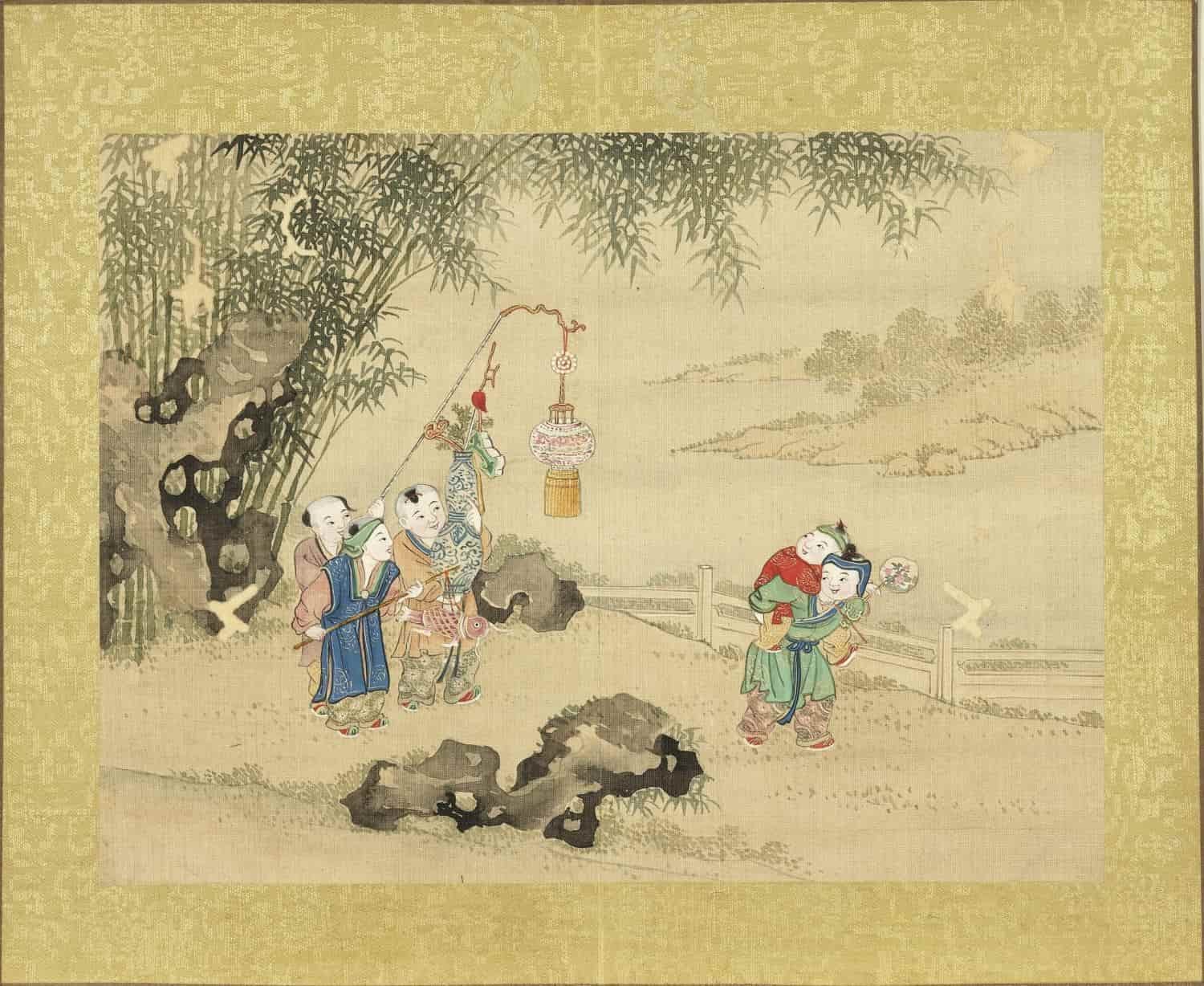
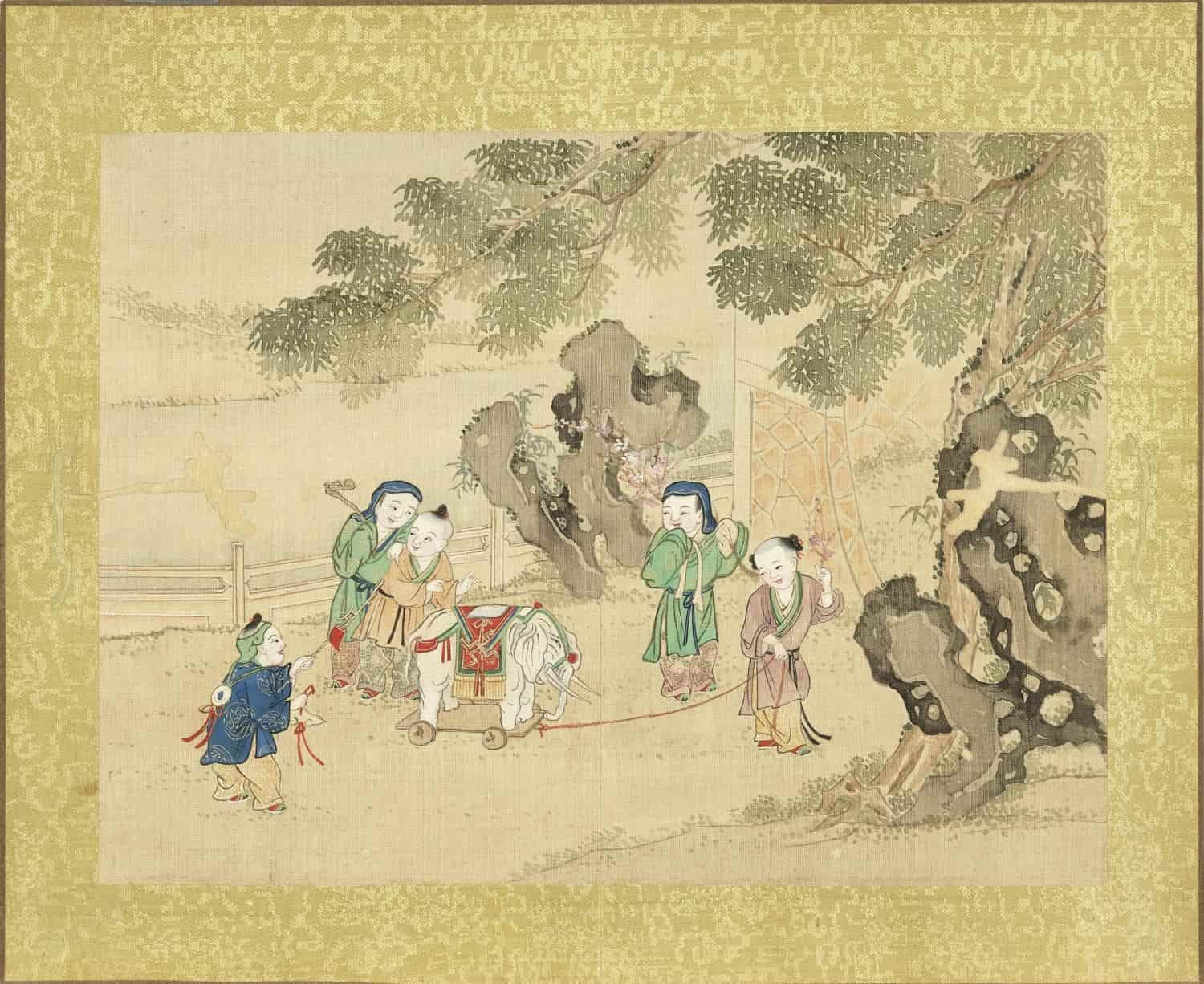
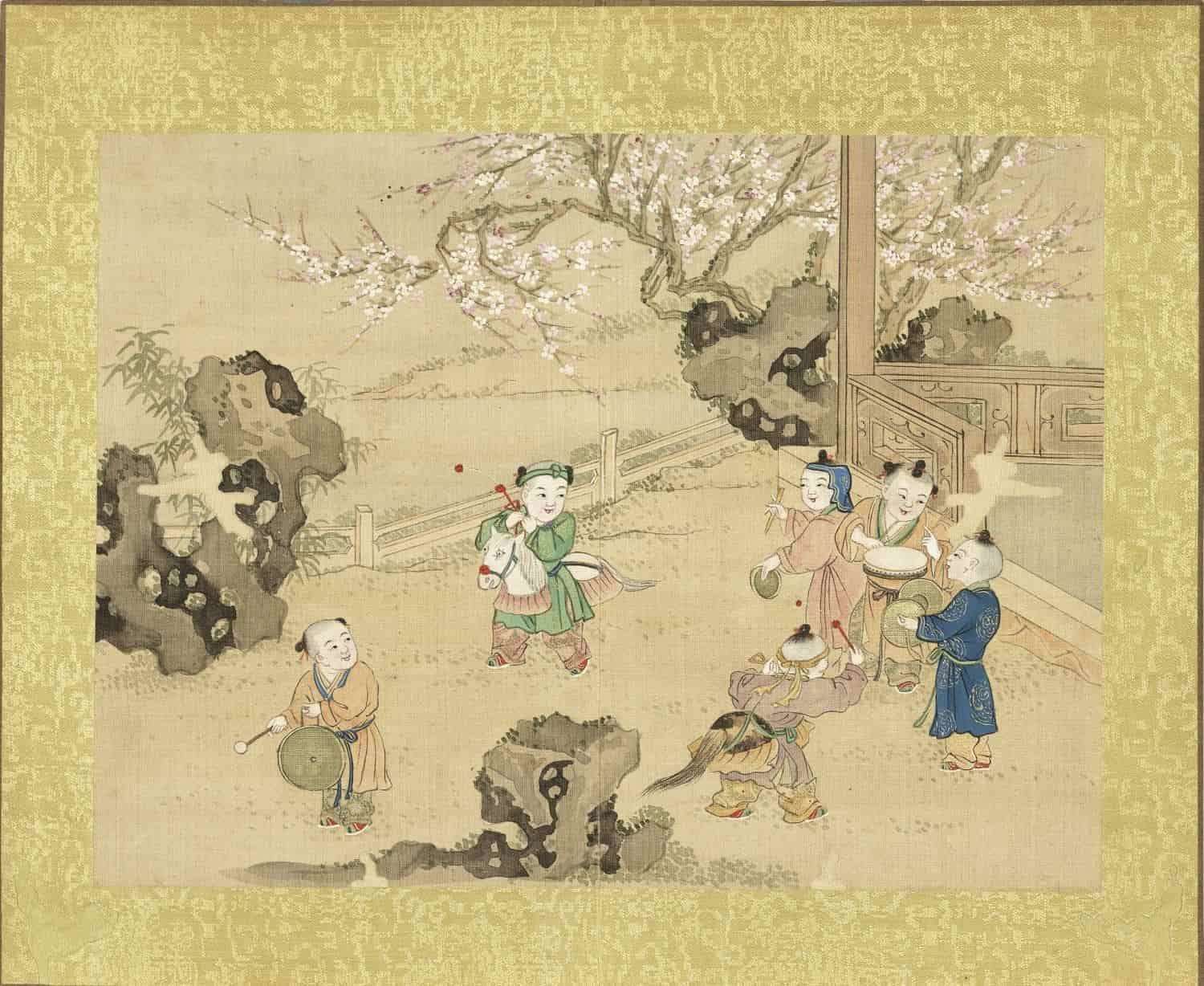
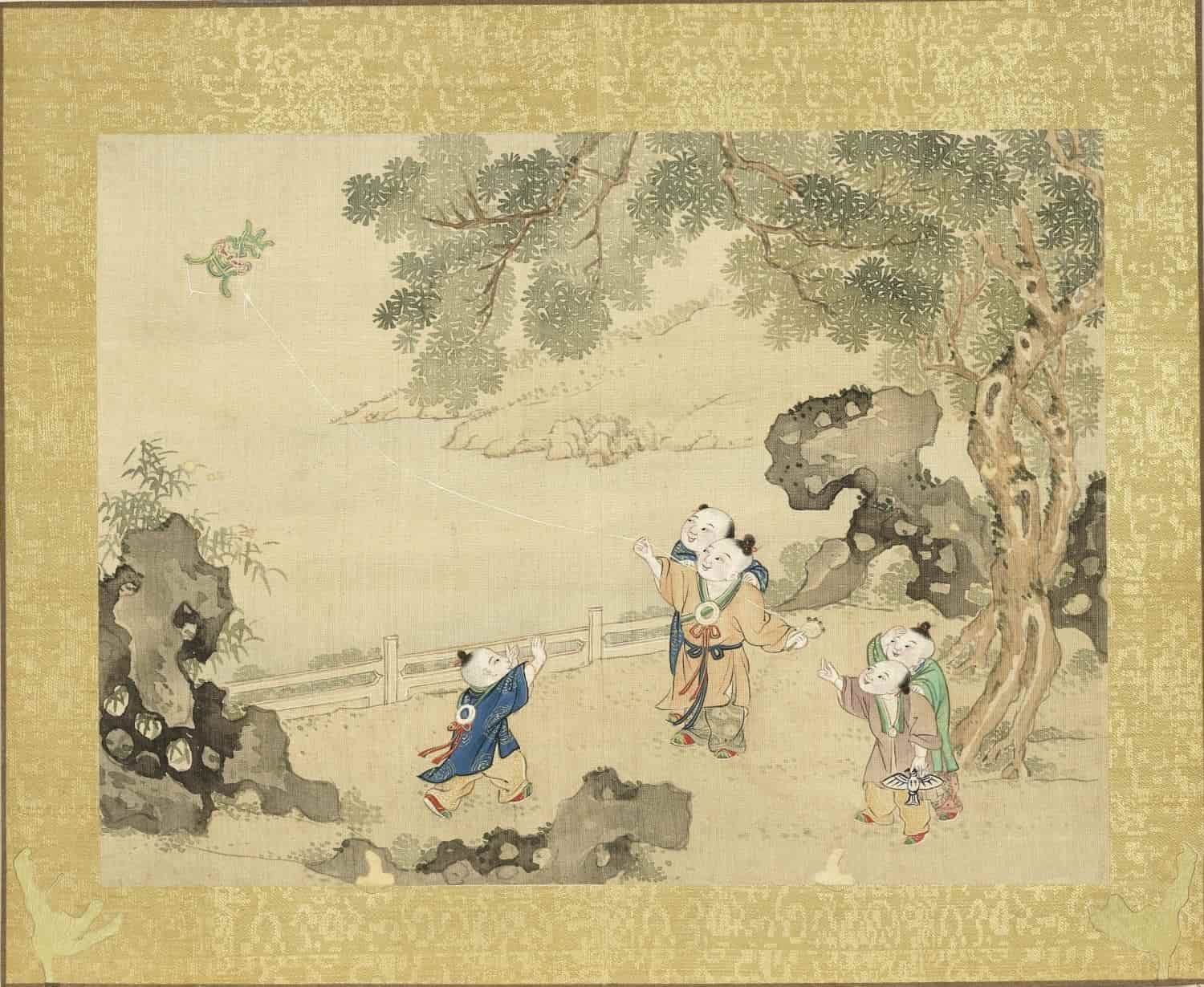
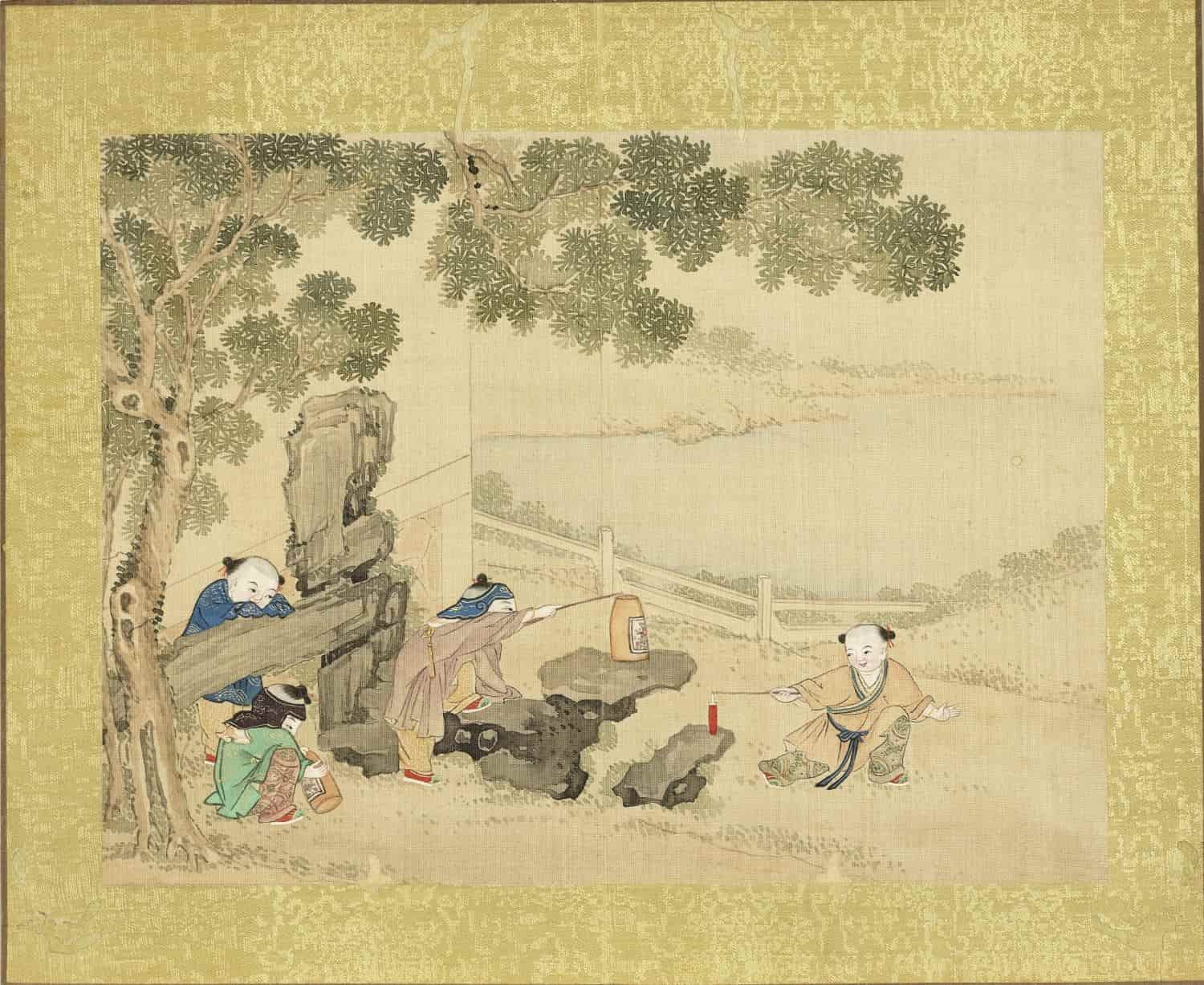
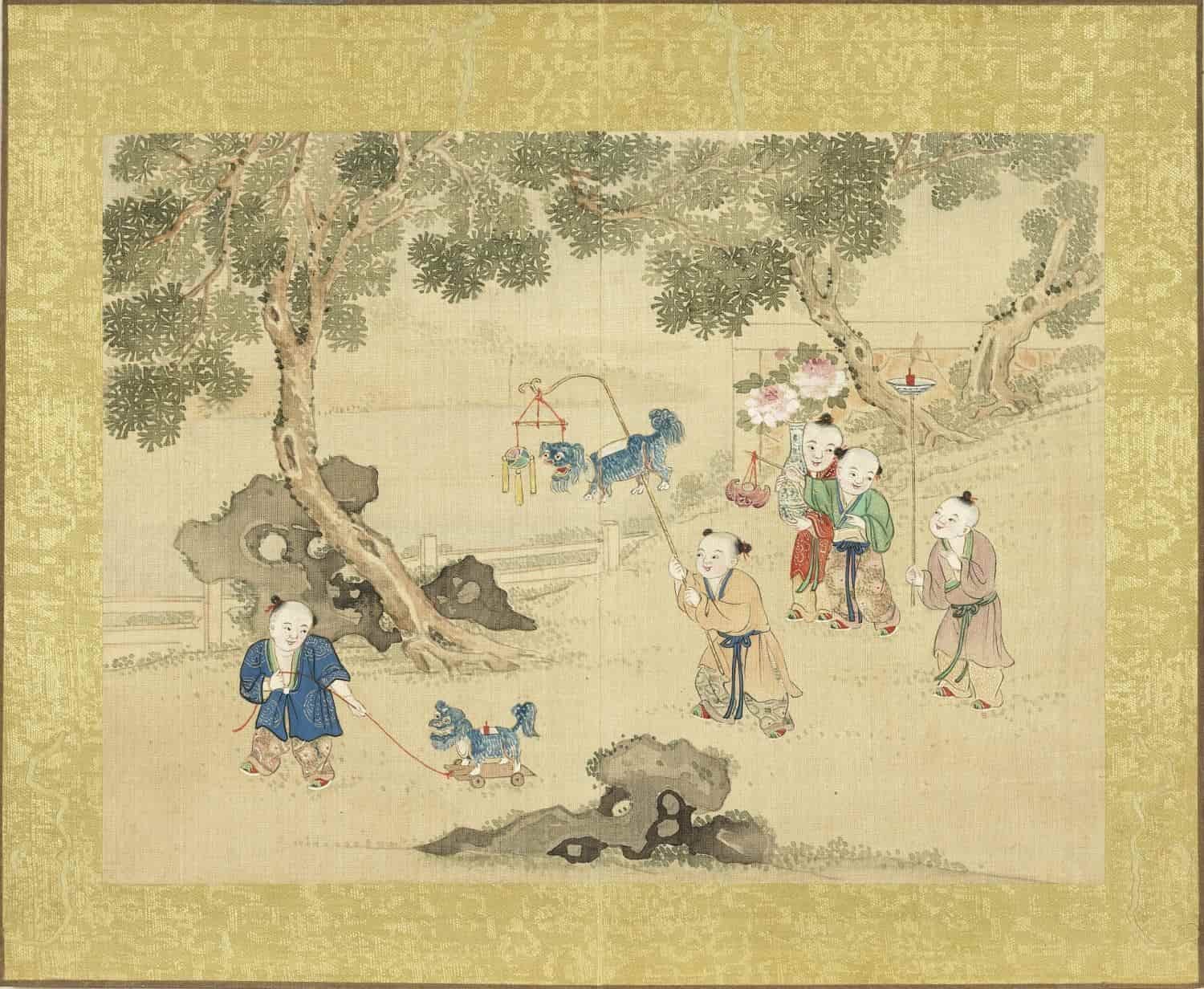
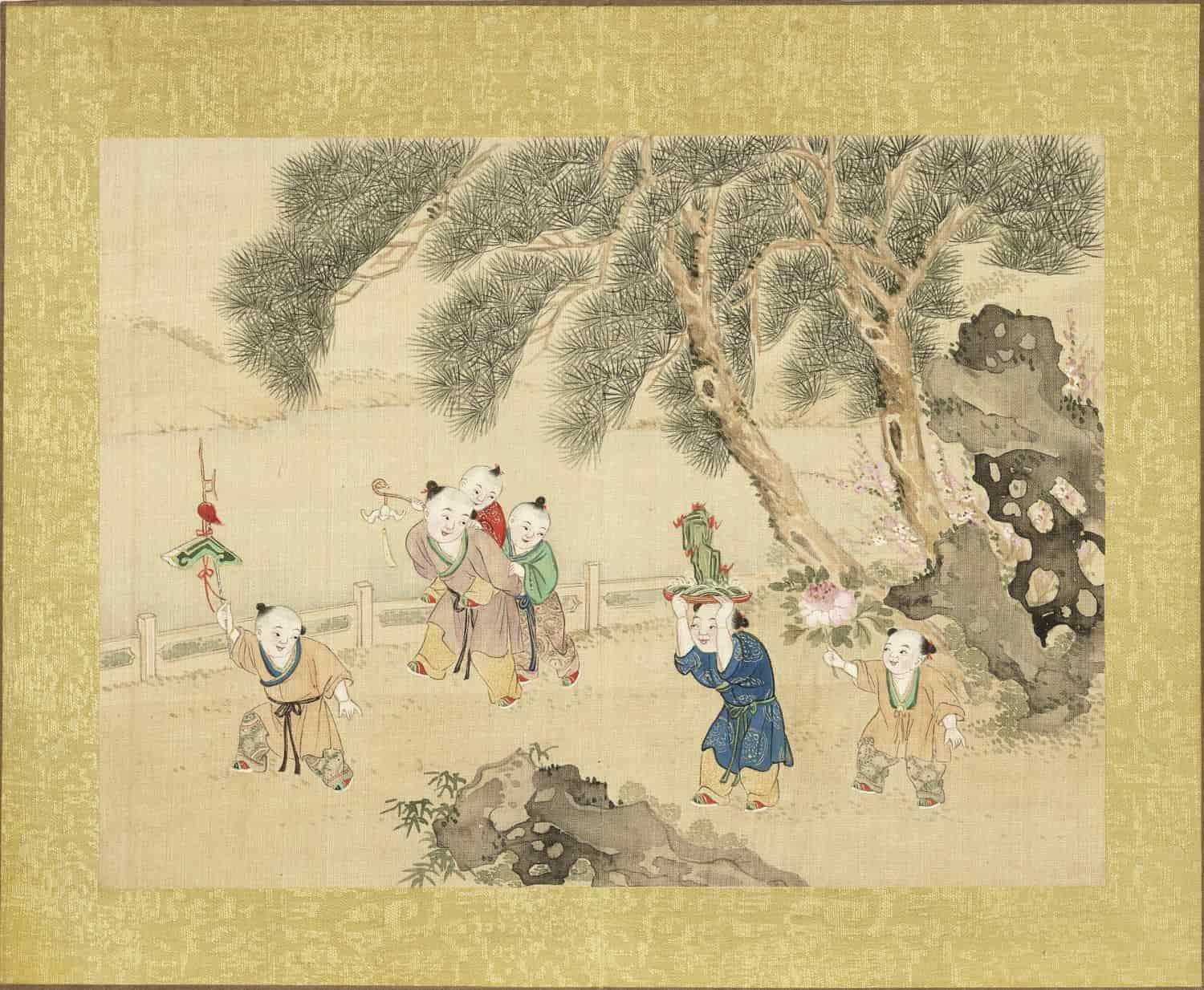

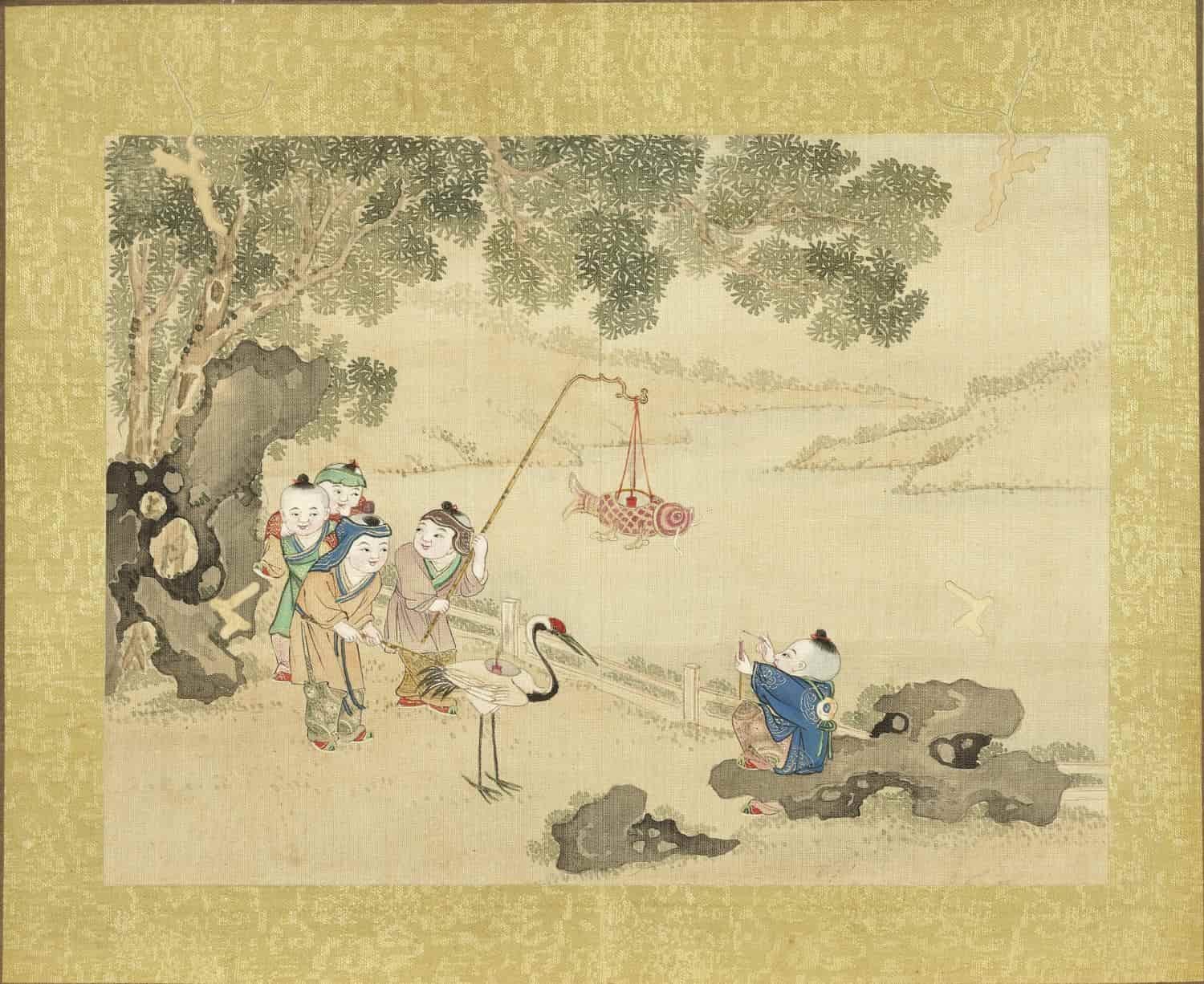

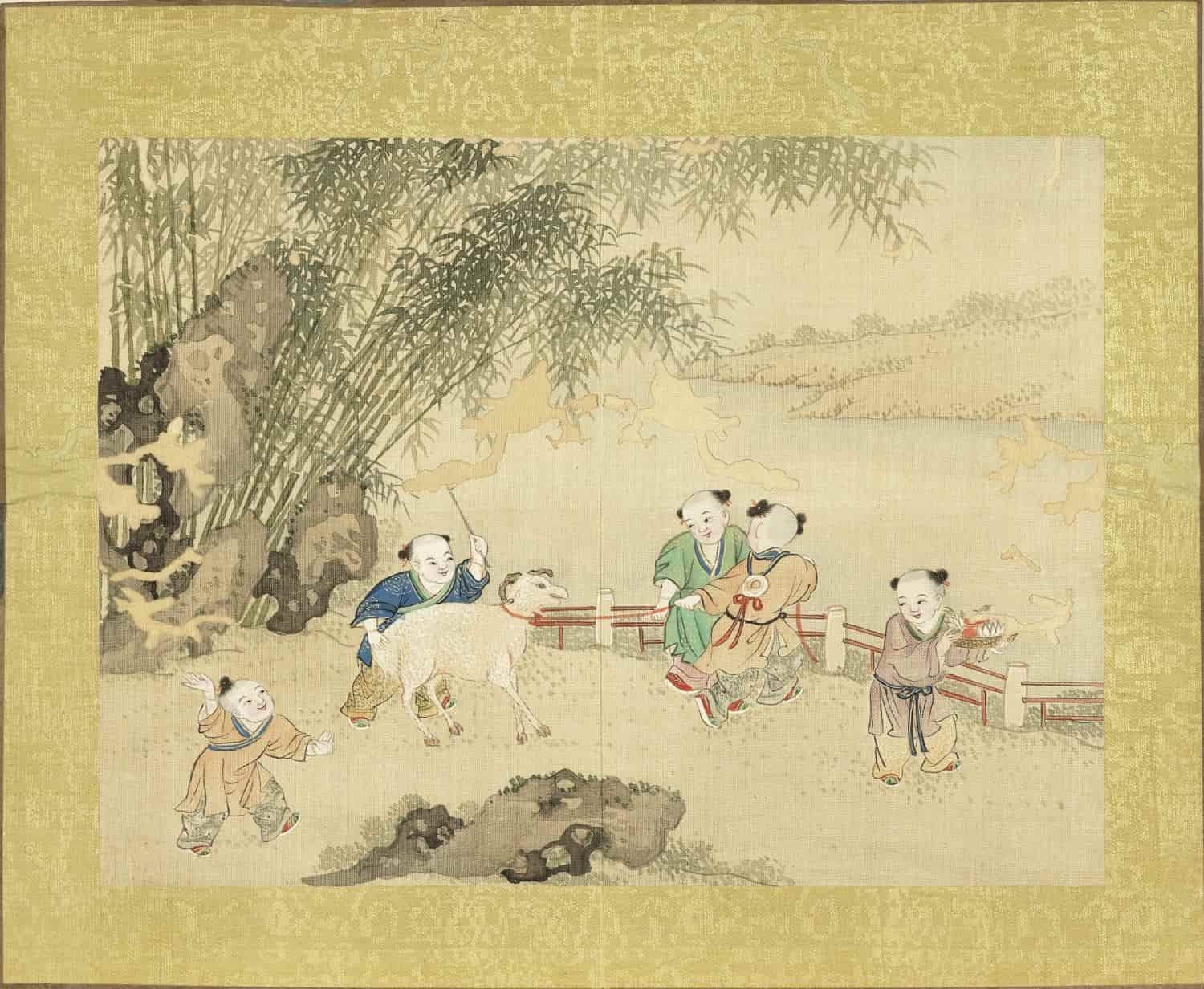
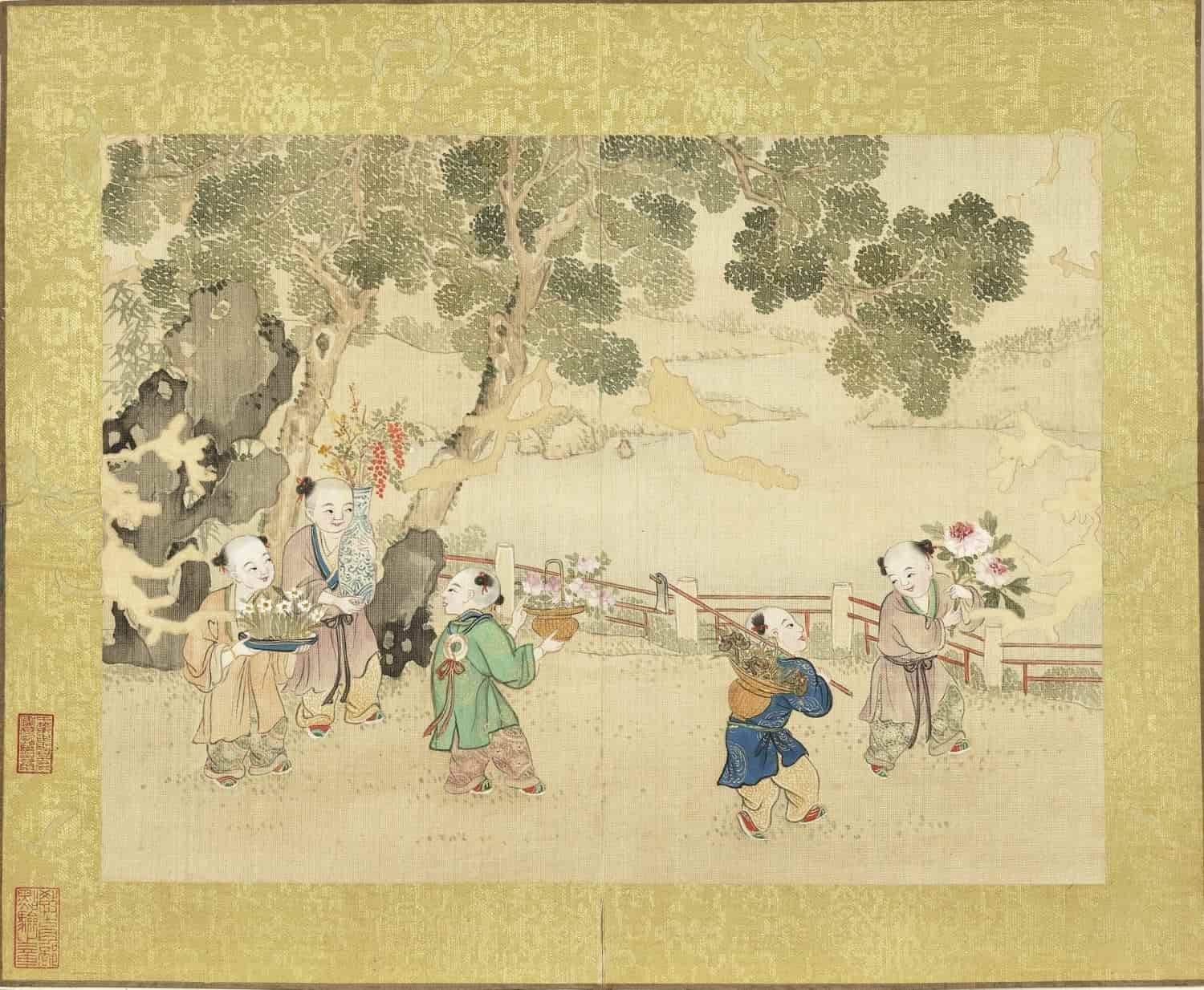
评价
目前还没有评价